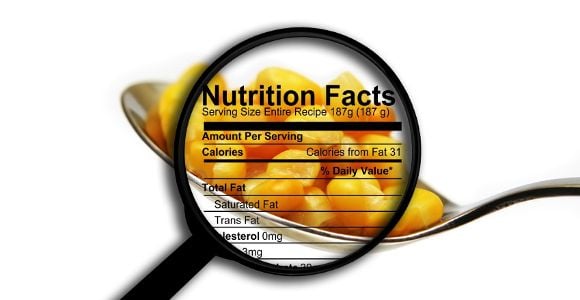Fiber and whole grain products have gained popularity and are popping up on grocery shelves in record numbers. It is important to understand the meaning of labels such as "high fiber," "made with whole grain" and "whole wheat." Studies have found whole grains and high fiber diets help with weight management and reduce risk of heart disease, diabetes and some cancers. The Dietary Guidelines recommend at least 3 servings of whole grains daily to meet nutritional needs; however, more than 80% of Americans consume less than one serving daily.
Even in spite of clever marketing, it is important to be able to decipher whole grains from refined grains. By definition, whole grains are made from the entire grain including the bran, germ and endosperm. Whole grains provide fiber, vitamins, minerals, antioxidants and phytonutrients that refined grains lack. "Whole grain" does not necessarily mean high fiber and vice versa. Breads may have added processed fiber from peas or other foods which do not contain antioxidants and phytonutrients found in whole grains. The fiber content of different grains varies based on the proportions of bran, germ and endosperm naturally occurring in the grain and also the amount of added sugar. For example, brown rice is 3.5% fiber while barley contains 15% fiber because it contains more of the bran portion. Grains such as crackers and cereals that contain added sugars will have to eliminate natural fiber to make room for the sugar content.
The best advice is to read labels carefully. Do not assume products that state "made with whole grain," "wheat" or "unbleached wheat flour" are whole grain. Look for 100% whole grain on the package or whole wheat flour listed as the first ingredient. If there are two grain ingredients and only the second ingredient listed is whole grain, the product can contain as little as 1% or as much as 49% whole grain. Many products have a mix of grains; however, "multigrain" does not necessarily mean all the grains are whole grains. For example, "multigrain" bread could contain 70% refined flour and only 30% whole grains.
To make the identification of whole grains easier, the Whole Grain Council encourages consumers to look for the Whole Grain Stamp on packages. The stamp comes in two varieties; a 100% Whole Grain Stamp assures foods contain a full serving or more of whole grains and that all the grain is whole grain while the basic Whole Grain Stamp can appear on products with at least half a serving of whole grains per serving. In order to meet nutritional guidelines, pick three foods with the 100% stamp or six foods with any whole grain stamp.
Overall it is best to look for products that are whole grain and high fiber. Both fiber and whole grains have documented health benefits and should be included in a well-balanced diet. Aim for breads that contain 3g of fiber per slice and cereals that contain 5g or more per serving. Choose grain products with minimal sugar and always look for the Whole Grain Stamp.
Laura N. Kenny is a Registered Dietitian and Certified Dietitian in the state of Indiana. She received both her Bachelor of Science degree in Dietetics and completed her dietetic internship at Purdue University. She is currently pursuing her Master of Science degree from Central Michigan University. Laura works for the Indiana Obesity Center PC under the supervision of Dr. Keith McEwen. She specializes in both surgical and non-surgical weight loss including nutritional adherence, meal planning, and macro/micro nutrient status. Kenny also promotes healthy eating through various speaking engagements throughout Indianapolis and teaches indoor cycling and Pilates classes in her free time. Since staring her dietetics career, she has worked with a variety of populations and chronic diseases. Each summer Laura volunteers at Camp John Warvel, a camp for children with diabetes. She also enjoys writing, sports, exercise, and reading "hot topics" in nutrition. Laura has a true passion for guiding people to choose healthy nutritional choices for each and every individual lifestyle. To contact Laura, email her at [email protected]. She can be reached via email at at [email protected].



